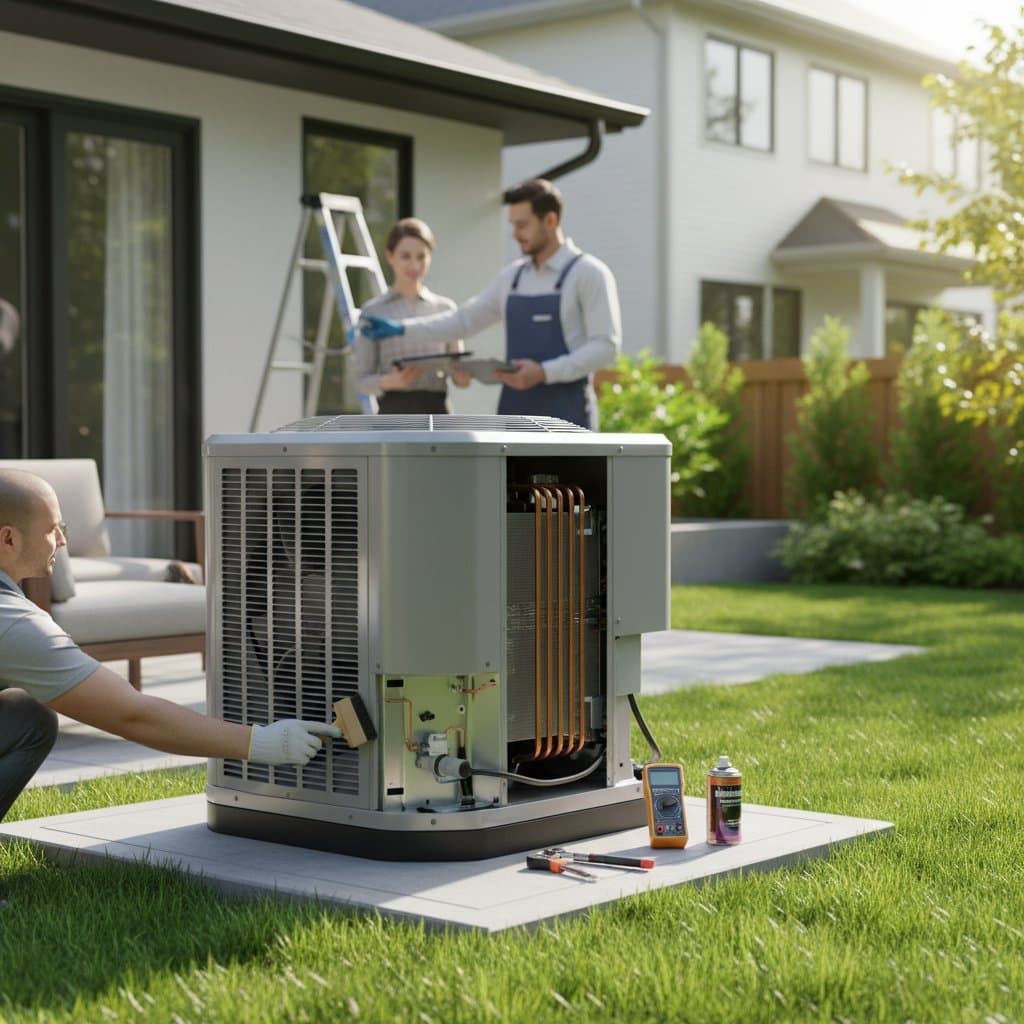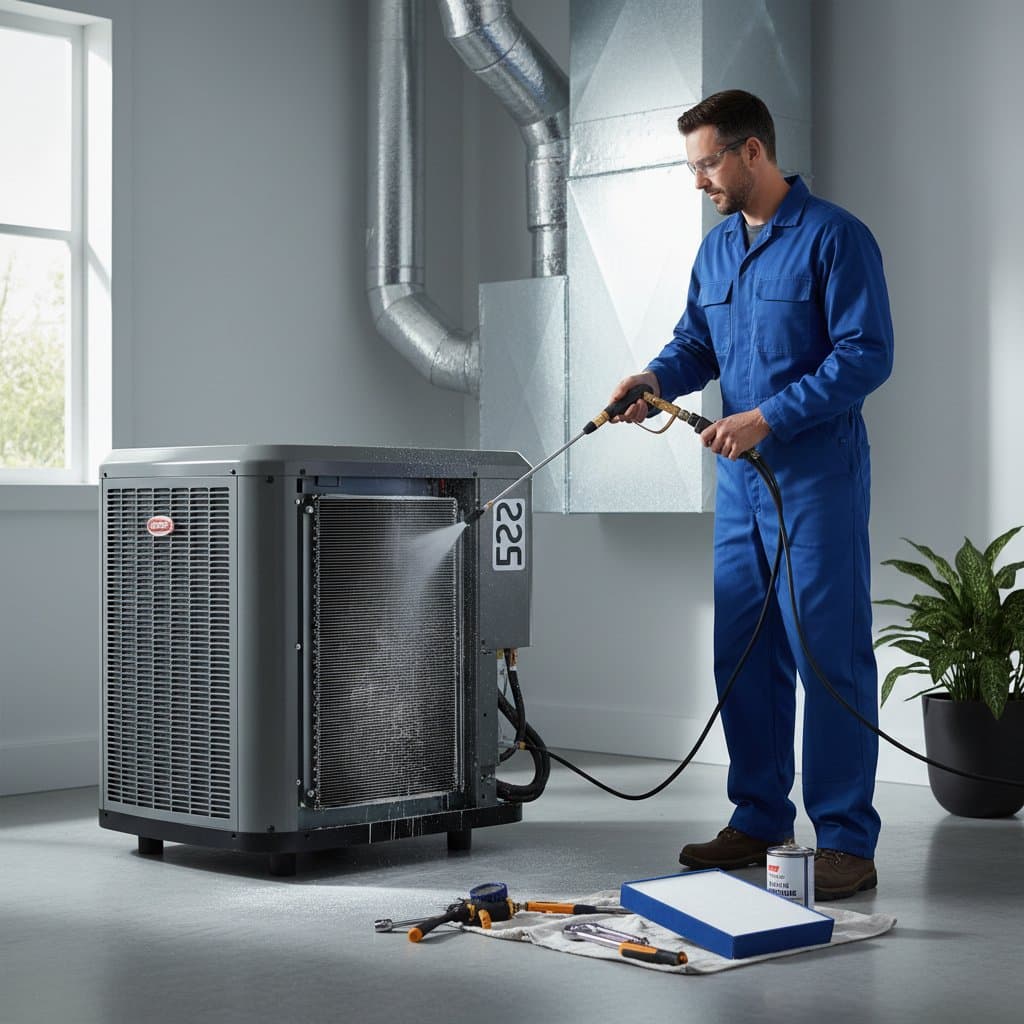Prepare for 2025 Heat Waves with an AC Tune-Up
Prolonged high temperatures turn an air conditioner into an essential component of home safety and comfort. Homeowners who arrange an AC tune-up prior to peak summer heat sidestep expensive failures, prolong equipment lifespan, and manage utility expenses effectively. Combining expert inspections with routine care ensures the cooling system operates smoothly during intense weather.
This resource details the elements of a comprehensive AC tune-up, identifies suitable DIY maintenance activities, and specifies when to engage a qualified technician. It further addresses associated expenses, durations, and protective measures to safeguard the system and residence.
Components of a Professional AC Tune-Up
A certified HVAC specialist adheres to a thorough protocol that evaluates all system elements. The procedure typically spans one to two hours, varying with the unit's age and access points.
Essential Procedures in a Tune-Up
-
Examine components visually
The specialist inspects coils, wiring, and refrigerant conduits for signs of corrosion, leaks, or deterioration. Additional checks include insulation integrity and duct sealing to optimize airflow. -
Clean condenser and evaporator coils
Accumulated dirt impedes heat exchange, much like an insulating layer. Thorough cleaning enables quicker cooling and reduced energy consumption. -
Replace or clean air filters
Obstructed filters force the unit to labor excessively. Timely filter changes alleviate blower motor stress and enhance indoor air purity. -
Verify refrigerant charge
Insufficient refrigerant frequently indicates a leak. Specialists employ pressure gauges for measurement and may introduce detection agents to identify minor breaches. -
Secure electrical connections
Frayed wiring or faulty contacts lead to erratic operation or startup failures. The technician reinforces connections and measures electrical output. -
Calibrate the thermostat
Inaccurate thermostat settings result in unnecessary energy use. Comparisons against a precision thermometer allow for necessary adjustments. -
Lubricate mechanical elements
Fan motors and blower units require regular oiling to minimize wear and operational noise. -
Clear condensate drains
Blockages from algae or buildup cause overflows. Flushing restores proper drainage. -
Conduct full system evaluation
Post-maintenance, the unit undergoes a complete operational test to confirm functionality.
These actions collectively promote optimal performance, user comfort, and equipment durability.
Indicators Requiring Expert Intervention
Certain symptoms suggest underlying problems that demand professional diagnosis.
- Reduced or inconsistent airflow from vents
- Frequent on-off cycling or prolonged cooling periods
- Unusual noises like humming or rattling
- Frost accumulation on coils or lines
- Unexplained increases in energy usage
Upon noticing these issues, deactivate the system immediately and book a service appointment. Persistent operation of a faulty unit risks severe damage, particularly to the compressor, a high-cost repair item.
Steps to Prepare for the Service Visit
Preparation streamlines the technician's work and maximizes the appointment's value.
-
Clear the surrounding area.
Relocate storage, tools, or obstacles from indoor and outdoor units to facilitate access. -
Ensure entry to components.
Unlock panels or enclosures for the condenser and air handler. -
Gather filter specifications and service history.
Provide details on filter dimensions and past maintenance to aid in material selection and context. -
Document specific issues.
Note any sounds, airflow problems, or odors to prioritize during the inspection.
Such preparations expedite the process and address key concerns comprehensively.
Optimal Scheduling for AC Maintenance
Arrange the tune-up ahead of the season's initial heat surge. Early bookings secure slots and resolve potential faults before heavy reliance on cooling begins. Delaying until summer's height often results in backlogs and elevated demand.
Consider a mid-season follow-up for units under constant use or in larger homes. Many owners opt for an end-of-summer review to transition to heating mode, particularly with integrated HVAC setups.
Balancing DIY and Expert Maintenance
Certain tasks suit homeowner execution, while others necessitate professional expertise and equipment.
| Task | Suitable for DIY | Requires Professional |
|---|---|---|
| Filter replacement | Yes | No |
| Surface coil cleaning | Yes | No |
| Electrical checks | No | Yes |
| Refrigerant assessment | No | Yes |
| Thermostat adjustment | Limited | Yes |
| Drain clearing | Yes | No |
| Duct evaluation | Limited | Yes |
Adopt a hybrid strategy: perform routine checks monthly at home and book expert visits annually or biannually for in-depth analysis.
Strategies to Prolong AC Lifespan
Consistent tune-ups extend air conditioner longevity by multiple years. Clean coils lessen compressor strain, and proper refrigerant balance prevents thermal damage. Systems under regular care often outlast neglected counterparts by up to a decade.
Incorporate programmable thermostats and zoned controls to target cooling where needed, thereby shortening operational cycles and component stress. Enhance home efficiency through better insulation or duct sealing to ease the system's workload.
Secure Long-Term Efficiency and Reliability
Investing in AC maintenance preserves comfort while controlling expenses. View the yearly tune-up as essential upkeep for residential well-being. Book professional care pre-summer, maintain a steady DIY schedule, and track all service records.
Proactive measures prevent failures in scorching conditions and sustain peak performance over time. Reliable cooling delivers unmatched assurance through every season.





